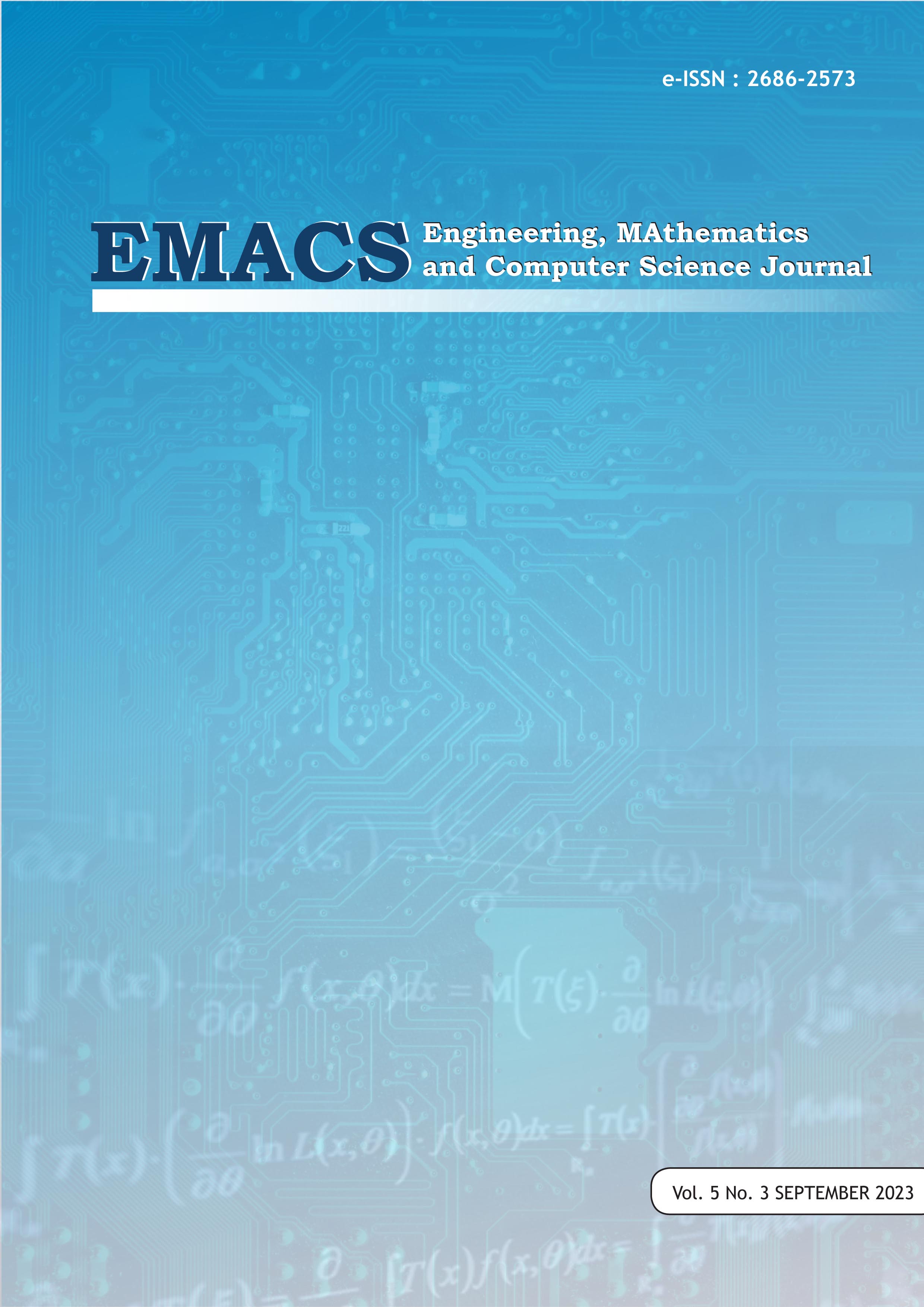Predictive Modeling of Jakarta's Social Cohesion: GBDT Leads Comparative Analysis
DOI:
https://doi.org/10.21512/emacsjournal.v5i3.10602Keywords:
Social Cohesion, Machine Learning, Urban Assessment, GBDT, Predictive AccuracyAbstract
In this study, we address the challenge of predicting the Social Cohesion Index in Jakarta through a comprehensive analysis of machine learning models. Finding the most accurate and effective predictive model for this crucial urban evaluation task is the primary goal of our research. We use a variety of machine learning algorithms, comparing their performance using metrics like Mean Absolute Error (MAE), Root Mean Square Error (RMSE), Mean Absolute Percentage Error (MAPE), and computational cost. These algorithms include Gradient Boosted Decision Trees (GBDT), Polynomial Regression, Random Forest, Support Vector Machine (SVM), and Multi-Layer Perceptron (MLP). It should be noted that GBDT stands out as a top performer, regularly displaying outstanding accuracy with a competitive MAE of 0.692, RMSE of 0.887, and MAPE of 25.59%. The computational efficiency of GBDT is also impressive, with predictions taking only 0.05 seconds. These results underscore the potential of GBDT as a practical and precise tool for real-time assessments of social cohesion in large urban environments like Jakarta. The findings offer a data-driven way to guide policy decisions and community development activities, with important implications for urban planning and governance. Overall, this research emphasizes the promise of GBDT in boosting social cohesion evaluation approaches and increases our understanding of the application of machine learning in addressing complex urban difficulties.
References
Amir, S., Hidayana, I., Rahvenia, Z., & Haydar, S. (2023). Dataset on factors associated with social cohesion of urban life in Jakarta. Data in Brief, 49, 109339. https://doi.org/10.1016/j.dib.2023.109339
Andariesta, D. T., & Wasesa, M. (2022). Machine learning models for predicting international tourist arrivals in Indonesia during the COVID-19 pandemic: a multisource Internet data approach. Journal of Tourism Futures, 1–17. https://doi.org/10.1108/JTF-10-2021-0239
Jewett, R. L., Mah, S. M., Howell, N., & Larsen, M. M. (2021). Social Cohesion and Community Resilience During COVID-19 and Pandemics: A Rapid Scoping Review to Inform the United Nations Research Roadmap for COVID-19 Recovery. International Journal of Health Services, 51(3), 325–336. https://doi.org/10.1177/0020731421997092
Narayan, V., & Daniel, A. K. (2022). Energy Efficient Protocol for Lifetime Prediction of Wireless Sensor Network using Multivariate Polynomial Regression Model. Journal of Scientific and Industrial Research, 81(12), 1297–1309. https://doi.org/10.56042/jsir.v81i12.54908
Ouma, Y. O., Okuku, C. O., & Njau, E. N. (2020). Use of Artificial Neural Networks and Multiple Linear Regression Model for the Prediction of Dissolved Oxygen in Rivers: Case Study of Hydrographic Basin of River Nyando, Kenya. Complexity, 2020. https://doi.org/10.1155/2020/9570789
Parbat, D., & Chakraborty, M. (2020). A python based support vector regression model for prediction of COVID19 cases in India. Chaos, Solitons and Fractals, 138, 109942. https://doi.org/10.1016/j.chaos.2020.109942
Pekel, E. (2020). Estimation of soil moisture using decision tree regression. Theoretical and Applied Climatology, 139(3–4). https://doi.org/10.1007/s00704-019-03048-8
Rybak, A. (2023). Survey mode and nonresponse bias: A meta-Analysis based on the data from the international social survey programme waves 1996 2018 and the European social survey rounds 1 to 9. PLoS ONE, 18(3 March). https://doi.org/10.1371/journal.pone.0283092
Sarker, I. H. (2021). Machine Learning: Algorithms, Real-World Applications and Research Directions. SN Computer Science, 2(3), 1–21. https://doi.org/10.1007/s42979-021-00592-x
Steiner, A., Woolvin, M., & Skerratt, S. (2018). Measuring community resilience: Developing and applying a “hybrid evaluation†approach. Community Development Journal, 53(1). https://doi.org/10.1093/cdj/bsw017
Tzenios, N. (2020). Examining the Impact of EdTech Integration on Academic Performance Using Random Forest Regression. ResearchBerg Review of Science and Technology, 3(1), 94–106. https://researchberg.com/index.php/rrst/article/view/84
Viljanen, M., Meijerink, L., Zwakhals, L., & van de Kassteele, J. (2022). A machine learning approach to small area estimation: predicting the health, housing and well-being of the population of Netherlands. International Journal of Health Geographics, 21(1), 1–18. https://doi.org/10.1186/s12942-022-00304-5
Zhang, Z., & Jung, C. (2021). GBDT-MO: Gradient-Boosted Decision Trees for Multiple Outputs. IEEE Transactions on Neural Networks and Learning Systems, 32(7), 3156–3167. https://doi.org/10.1109/TNNLS.2020.3009776
Downloads
Published
How to Cite
Issue
Section
License
Copyright (c) 2023 Engineering, MAthematics and Computer Science (EMACS) Journal

This work is licensed under a Creative Commons Attribution-ShareAlike 4.0 International License.
Authors who publish with this journal agree to the following terms:
- Authors retain copyright and grant the journal right of first publication with the work simultaneously licensed under a Creative Commons Attribution License - Share Alike that allows others to share the work with an acknowledgment of the work's authorship and initial publication in this journal.
- Authors are able to enter into separate, additional contractual arrangements for the non-exclusive distribution of the journal's published version of the work (e.g., post it to an institutional repository or publish it in a book), with an acknowledgment of its initial publication in this journal.
- Authors are permitted and encouraged to post their work online (e.g., in institutional repositories or on their website) prior to and during the submission process, as it can lead to productive exchanges, as well as earlier and greater citation of published work.
USER RIGHTS
All articles published Open Access will be immediately and permanently free for everyone to read and download. We are continuously working with our author communities to select the best choice of license options, currently being defined for this journal as follows: Creative Commons Attribution-Share Alike (CC BY-SA)





